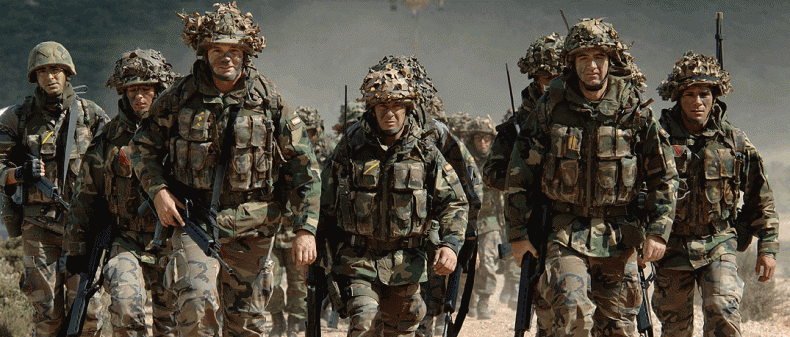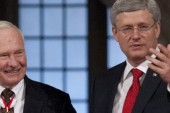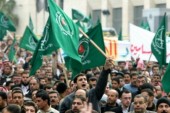
This is the last in a series of five articles focusing on the experience of a Canadian counter-terrorism analyst at a NATO seminar in Denmark, to discuss the future of national security and how NATO intends to respond to emerging threats around the world.
With NATO being heavily tasked in Afghanistan and the Balkans, policy has shifted to increase NATO’s strategic focus and operational presence to areas outside of the European sphere. This has raised the risk of overstretching NATO’s limited resources and operational capabilities, driving NATO to adopt a new policy of ‘Smart Defence.’ This briefing will explore the issues and examine the problems, with a focus will be on the major challenges facing Afghanistan, the challenge of adopting smart defense, and why NATO is looking to increase its presence outside of Europe.
Afghanistan
As NATO is getting ready to end its combat role in Afghanistan and withdraw from the country, they are constantly looking to point to successes before they leave. With the major challenges being security, sustainability and good governance, NATO is fighting a losing battle on all three fronts. Having wed ourselves to a corrupt, inept and unpopular government, NATO has little to show the Afghan population for its 11-year mission. On top of this, Afghanistan remains a praying ground for Pakistan and Iran who continue to subvert NATO interests in the region while undermining NATO’s ability to provide effective security to the country.
With little to point to in the area of success, NATO’s combat role will finish while its member states are likely to leave behind a small security force and intelligence apparatus to ensure that any progress that was made is not quickly unraveled by the Taliban or its jihadi affiliates. With a power vacuum set to blow the day NATO formally ends its combat role, what little stability there is will further be undermined by a slow but steady resurgence of Taliban activity. NATO’s only option to mitigate the damage is to increase its commitment to post-conflict development and reconstruction while supporting better governance after a formal hand off of power is made.
Shift in Focus
In the last few years, NATO has shifted its efforts to become operational in the South Caucasus. The stated purpose is to establish a missile defense system that can monitor and thwart Iran’s growing missile capabilities. Russia views this with a high degree of suspicion and hostility and has been the primary actor thwarting NATO’s attempts to induct members from the South Caucasus.
Having seen several conflicts flare up since the end of the Cold War (Russian-Georgia War, Chechnya, Dagestan, South Ossestia and Abkhazia and Nagorno-Karabakh to name a few), the Caucasus are considered a highly vulnerable region that is often overlooked by security analysts. As an area that is largely considered to be Russia’s “backyard,” any NATO role in this region is met with a very high degree of suspicion and hostility from the Putin administration.
As Iranian activity in this area continues to grow, the South Caucasus have taken on a new meaning due to its proximity to what is largely considered the greatest emerging threat, a nuclear-armed Iran with a high functioning ballistic missile capability. This has led the US and NATO officials to embrace the idea of inducting at least one of the countries in this region into NATO with the goal of establishing a missile defense system in the area that can thwart Iran’s ballistic capabilities.
With this goal in mind, any NATO role in this region must be coordinated with Russia. Since Russia has no interest in giving their old rival additional bases along their border and would obviously disdain a missile defense system that could undermine their own missile capabilities, negotiations have been slow and fraught with challenges. There are no assurances that the US and Russia will come to an agreement, and as Iran’s missile capabilities continue to grow, NATO may fail to meet its goal in time.
Future Policy
With a drawdown in Afghanistan and a new operational focus on the South Caucasus, the issue of Smart Defence takes on a new dimension. With NATO members still reeling from economic crises that are nowhere close to being resolved, defense departments throughout the West are drawing a blank on how to fund NATO amidst crippling budget cuts.
With the need to maintain a continuously deployable force, the challenge is not just financial, but also political. As new governments struggle to justify the need for more defense spending to their constituencies, the ability of Western governments to shore up the votes needed to stay in power will wane accordingly to their economic stature. Needless to say, investing in the military is not high on their priority list.
The key to Smart Defense is to balance responsibilities and costs in a more effective manner. This means joint exercises, interoperability, common standards and multinational cooperation. With the need to prioritize defense spending on the most pertinent threats, expenses have been focused on mine resistant ambush vehicles, air activation modules, missile defense systems and ground surveillance.
To achieve these goals, NATO and the EU are the primary facilitators. NATO members must restructure the organization to prioritize and specialize their areas of expertise. An example is to have the EU and Common Security and Defence Policy (CSDP) projects integrated into NATO while having US initiatives maintained in the NATO pillar. The key is to build a structure for permanent strategic dialogue amongst these allies and other key players. Another is to integrate technology that can help meet the new operational imperatives while reducing the costs of hiring additional personnel.
Ultimately, the goal of Smart Defense is old wine in new bottles. However, amidst one of the worst economic recessions in history, the political and financial challenges are multiplied tenfold. Only a sustainable dialogue between key players will shore up the motivation necessary to overcome the challenges and ensure that an operationally sophisticated and rapidly deployable force is maintained. Only time will tell if Western governments are capable of meeting these challenges before it’s too late.
____
Jason Wiseman is a Senior Counter-Terrorism Analyst. He writes about foreign affairs.
For more, follow us on Twitter @TorontoStandard and subscribe to our newsletter.














